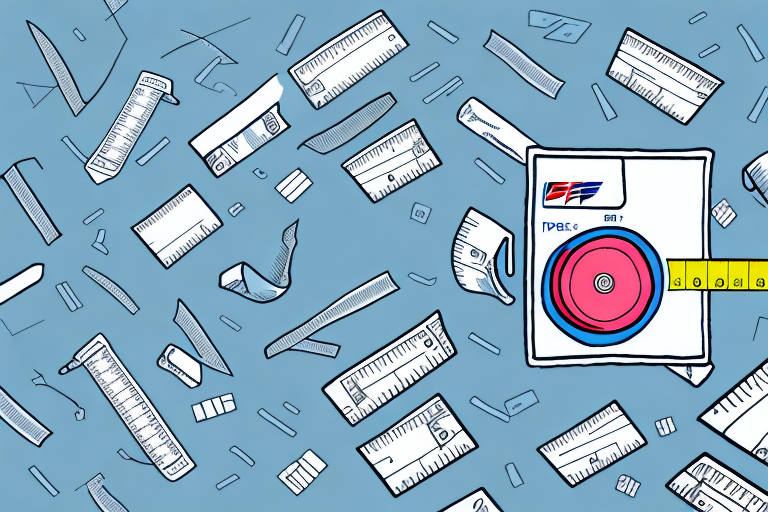How to Handle Packages Over 108 Inches with FedEx Additional Handling
Shipping large items with FedEx requires understanding their additional handling policy, which applies to packages exceeding 108 inches in combined length and girth or weighing over 150 pounds. This policy can result in extra fees, so it's crucial to be well-informed to manage your shipping costs effectively. This guide offers a comprehensive overview of FedEx's additional handling policy, including how to measure your package correctly, choose appropriate packaging materials, and utilize the best shipping options available. We will also discuss how to calculate shipping costs with additional fees, avoid common mistakes, and compare FedEx's policies with other carriers. Additionally, we'll explore the impact of COVID-19 on shipping large packages and provide practical tips to save money on your shipments.
Understanding FedEx's Additional Handling Policy
FedEx imposes an additional handling fee for packages that exceed their standard size and weight limits to ensure safe and efficient transport. Specifically, this fee applies to:
- Packages with a combined length and girth exceeding 108 inches.
- Packages weighing more than 150 pounds.
- Items not fully encased in sturdy packaging materials.
- Packages with irregular or elongated shapes.
The additional handling fee varies based on the package's weight, dimensions, and shipping destination. It's essential to incorporate this fee into your shipping budget to avoid unexpected costs.
Relevant Data and Statistics
According to FedEx's latest shipping guidelines, approximately 15% of packages fall into the oversized category, necessitating additional handling fees. Understanding these statistics can help businesses anticipate and manage shipping expenses more effectively.
When Does the Additional Handling Fee Apply?
The additional handling fee is applicable in the following scenarios:
- Size and Weight: Packages exceeding 108 inches in combined length and girth or weighing over 150 pounds.
- Special Handling Requirements: Packages containing fragile items, hazardous materials, or live animals.
- Irregular Shapes: Packages that are not uniformly shaped or have elongated dimensions.
For example, a package measuring 110 inches in length and girth combined or weighing 160 pounds will incur an additional handling fee.
Industry Insights
Industry reports indicate that the demand for shipping oversized packages has increased by 20% over the past year, driven by the rise in e-commerce and the shipment of bulkier consumer goods.
What Are the Dimensional Limits for FedEx Packages?
FedEx categorizes packages based on their dimensions as follows:
- Small Packages: Up to 84 inches in combined length and girth.
- Medium Packages: Up to 108 inches in combined length and girth.
- Large Packages: Over 108 inches in combined length and girth.
It's important to note that these limits can vary based on the shipping destination and the specific FedEx service used. For instance, international shipments may have stricter size restrictions compared to domestic ones.
Source
For the most accurate and up-to-date information on FedEx's dimensional limits, refer to the FedEx Overweight and Oversize Policies.
How to Measure Your Package Correctly
Accurate measurement of your package is essential to determine if it qualifies for additional handling fees. Follow these steps to measure your package correctly:
- Length: Measure the longest side of the package.
- Girth: Measure the distance around the package at its thickest point, perpendicular to the length.
- Combined Measurement: Add the length and girth together. If the total exceeds 108 inches, additional handling fees apply.
For irregularly shaped packages, sum all dimensions to ensure accuracy.
Best Practices
Using a tape measure and verifying measurements with a second person can help prevent errors. Additionally, consulting FedEx's online resources or customer service can provide clarification when needed.
Choosing the Right Packaging Materials for Large Items
Selecting appropriate packaging materials is vital to protect oversized items during transit. Here are some recommended materials:
- Wooden Pallets: Provide a sturdy base for heavy items, ensuring stability during transport.
- Corrugated Cardboard: Offers robust protection against impacts and abrasions.
- Industrial-Strength Shrink Wrap: Protects items from moisture, dust, and other environmental factors.
- Corner Protectors: Prevent shifting and reduce the risk of structural damage.
Expert Recommendations
According to packaging experts at the Packaging Digest, investing in high-quality packaging materials reduces the likelihood of damage and can save costs associated with returns and claims.
Tips for Properly Securing Your Package for Transport
Properly securing your package ensures it remains intact during transit. Follow these guidelines:
- Use industrial-grade strapping to fasten the package securely to the pallet.
- Center the item on the pallet to maintain balance.
- Apply corner protectors to safeguard against impacts.
- Fill gaps with appropriate dunnage materials to prevent shifting.
Additional Resources
Learn more about effective packaging techniques from the 4over4 Packaging Blog.
What Are the Shipping Options for Large Packages?
FedEx offers several shipping options tailored for large packages:
- FedEx Ground: Suitable for standard ground delivery of large packages with competitive pricing.
- FedEx Express: Ideal for time-sensitive shipments, including overnight and weekend deliveries.
- FedEx Freight: Designed for heavy or oversized items requiring freight shipping services.
Choosing the right service depends on your specific needs, such as delivery speed, cost constraints, and the nature of the items being shipped.
Choosing the Right Service
For detailed comparisons of FedEx's shipping services, visit the FedEx Shipping Services page.
How to Calculate Shipping Costs with Additional Handling Fees
Calculating shipping costs accurately involves considering several factors:
- Package Weight and Dimensions: Heavier and larger packages incur higher fees.
- Shipping Destination: International shipments often cost more than domestic ones.
- Service Level: Faster delivery options typically cost more.
- Additional Fees: Includes handling, insurance, and any special handling requirements.
Use FedEx's online shipping calculator to estimate your total shipping costs, including any applicable additional fees.
Cost-Saving Strategies
Consolidating shipments and selecting the appropriate service level can help manage and reduce shipping costs effectively.
Common Mistakes to Avoid When Shipping Large Packages with FedEx
Avoiding common errors can ensure your packages arrive safely and cost-effectively:
- Incorrect Measurements: Inaccurate measurements can lead to unexpected fees.
- Poor Packaging: Using inadequate materials increases the risk of damage.
- Improper Securing: Failing to secure the package properly can cause shifting during transit.
- Incorrect Labeling: Missing or incorrect labels can lead to handling issues.
- Ignoring Fees: Not accounting for additional handling fees can disrupt your budget.
Learn More
For a detailed list of shipping best practices, visit the ShipBob Packaging Tips.
How to File a Claim for Damaged Packages During Shipping
If your package arrives damaged, follow these steps to file a claim with FedEx:
- Gather necessary information:
- Tracking number
- Detailed description of the damage
- Photographs of the damaged package
- Proof of value (e.g., purchase receipt)
- Submit your claim online through the FedEx Claims Center or contact FedEx customer service directly.
- Await investigation and resolution from FedEx.
Timelines
File your claim within 60 days of the shipment date to ensure eligibility for compensation.
Best Practices for Shipping Large Items with FedEx
Implement these best practices to ensure the safe and cost-effective shipping of large items with FedEx:
- Accurately measure your package.
- Select appropriate packaging materials.
- Secure your package properly for transport.
- Label your package with correct shipping and handling instructions.
- Include additional handling fees in your shipping budget.
- File claims promptly if damage occurs.
Additional Recommendations
Regularly review FedEx's shipping policies and stay updated on any changes to ensure compliance and optimal shipping efficiency.
Comparing FedEx's Additional Handling Fees with Other Carriers
When evaluating shipping options, it's beneficial to compare FedEx's additional handling fees with those of other carriers like UPS and DHL. Consider the following factors:
- Fee Structures: Compare how each carrier calculates additional fees based on size, weight, and special handling requirements.
- Service Offerings: Assess the range of shipping services provided and their suitability for your needs.
- Reputation: Consider each carrier's track record for handling large and fragile items.
- Insurance and Protection: Evaluate the insurance options and compensation policies for damaged or lost packages.
Industry Comparison
According to the Statista shipping market report, FedEx remains competitive in handling oversized packages, but carriers like UPS may offer more flexible pricing for certain shipment sizes.
How to Save Money on Shipping Large Items with FedEx
Implement these strategies to reduce shipping costs for large items with FedEx:
- Consolidate Shipments: Combine multiple items into a single shipment to minimize handling fees.
- Select Appropriate Service Levels: Choose cost-effective services like FedEx Ground for non-urgent deliveries.
- Optimize Packaging: Use materials that meet size and weight requirements without excess, avoiding additional fees.
- Leverage Discount Programs: Enroll in programs like FedEx Advantage for discounted shipping rates.
Additional Cost-Saving Tips
Regularly review your shipping processes to identify inefficiencies and areas where costs can be minimized without compromising package safety.
Understanding the Impact of COVID-19 on Shipping and Handling of Large Packages
The COVID-19 pandemic significantly affected the shipping industry, including the handling of large packages. Key impacts include:
- Operational Adjustments: FedEx implemented social distancing measures and contactless delivery options to protect employees and customers.
- Delays and Backlogs: Increased shipping volumes led to temporary delays in delivery times.
- Heightened Demand for E-commerce: Surge in online shopping resulted in more shipments, including large packages.
While many operational challenges have been mitigated, it's essential to remain aware of potential delays and plan shipments accordingly.
Current Status
As of 2023, FedEx has adapted to the evolving landscape by enhancing their logistics infrastructure and maintaining robust safety protocols to ensure timely and safe deliveries.
Conclusion
Successfully shipping large items with FedEx involves a thorough understanding of their additional handling policies, accurate measurement and packaging of your packages, and strategic selection of shipping services. By following best practices, avoiding common mistakes, and leveraging cost-saving strategies, you can ensure that your oversized packages reach their destinations safely and economically. Additionally, staying informed about industry changes and external factors like the COVID-19 pandemic can help you navigate the complexities of large-scale shipping effectively.






















